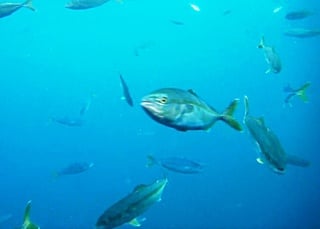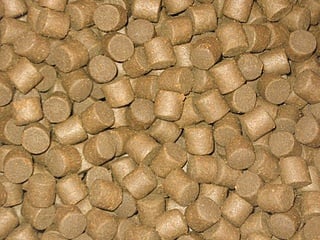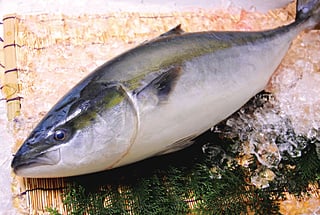Features
What is "Hiro-Biro Ikesu"?
Hyoshoku's most distinguishing feature is that it cultures Hamachi using giant preserves called "Hiro-Biro Ikesu."
The size of fish preserves commonly used for sea culturing in Japan is 10m×10m×10m. In contrast, Hyoshoku conducts culturing using “Hiro-Biro Ikesu®,” a giant preserve measuring 60m×40m×25m. Through sparse rearing in this giant preserve, our “Hiro-Biro Ikesu Hamachi” get significantly more exercise than normally cultured Hamachi. This gives our Hamachi an excellent firmness which is closer to that of fish caught in the open sea.

Furthermore, fish in the wild normally swim at depths of 30m to 50m. Although not as deep as natural conditions, Hiro-Biro Ikesu Hamachi swim at depths of around 20m. The application of appropriate water pressure to fish promotes the healthy growth of cells.
Benefits to be farmed in "Hiro-Biro Ikesu"
Normally, cultivation of Hamachi involves raising about 3,000 fish in a small preserve. Conversely, our Hiro-Biro Ikesu preserve cultivates about 20,000 Hamachi in an area which is approximately 48 times larger than normal. If conventional cultured Hamachi are compared to generic chicken for broiling, our Hiro-Biro Ikesu Hamachi can be compared to local brands of free-range chicken.
Sparse rearing allows fish to get abundant exercise and gives Hiro-Biro Ikesu Hamachi firm flesh. Moreover, sparse rearing encourages the healthy growth of fish and makes it possible to minimize the administration of medicine.
Sustainability
Hyoshoku has also taken on the challenge of sustainable Hamachi farming. It includes the use of artificially-bred fish seed and feed with low fish-meal content. Furthermore, Hyoshoku has formulated and implemented an HAACP plan, which includes the fish farm. The plan is unequaled anywhere in the world and helps preserve the marine environment around the farm.

Raw fish is not used as feed because thawing drip and uneaten feed pollute the marine environment. The feed used by Hyoshoku centers on expansion pellets, which are feed mixtures. They decrease the waste of uneaten feed and lysate in the waters during feeding, minimizing the burden placed on the environment.

Our stocking densities are far lower than average and are, in fact, significantly below statutory requirements. It may be more efficient to farm Hamachi in excessively high densities within the preserve. However, this brings about a deterioration of water quality and not only pollutes the marine environment but also inhibits the Hamachi's healthy growth.
Location of aquaculture fisheries
Hyoshoku owns two aquaculture grounds in Oita Prefecture and two grounds in Nagasaki Prefecture for Hamachi exported abroad. The waters at all locations are deep with a swift current. These four aquaculture grounds combined with the grounds for farming Hamachi for domestic consumption make Hyoshoku one of the largest producers in Japan that farms about 6,000 tons of Hamachi per year.

